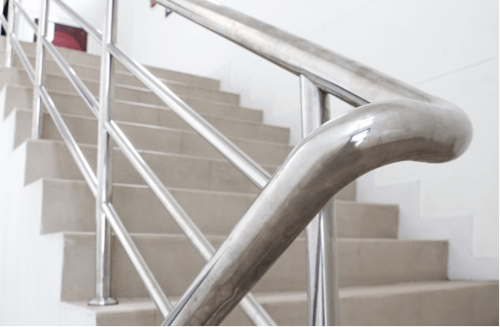Evacuation Chairs vs. Slyde Medical Sleds – Some Pros and Cons

When considering all the possibilities for evacuating a disabled person down stairs, there are many circumstances to consider. In a true emergency there are several methods of getting a disabled or unconscious person to safety, including (1) the fireman’s lift (carrying the person over one’s shoulder), (2) an evacuation chair, and (3) a medical sled, such as the Slyde.
Each evacuation technique has unique benefits, but every disabled individual and every emergency situation may have specific factors to consider. Are the operators of the rescue method trained? Do they need to be? Is there time to wait for a first responder or trained rescuer? Will the person need to be strapped in? Will the disabled person’s weight (or the rescuer’s strength) be an issue?
Additionally, one must consider the setting of the evacuation. Evacuating a hotel or sports arena is a far different thing from evacuating a hospital or school. Population size, the known presence of disabled individuals, and the number emergency routes to be covered are all factors that may make one evacuation device more amenable than another.
Evacuation Chairs
Evacuation chairs are usually a standard resource for hospitals and medical facilities, as they allow one staff member to lower a disabled person safely down a staircase. This means they can accommodate more disabled individuals at once, as only one staff member and chair is needed per person.
However, an evacuation chair may not be adequate if the person being evacuated is unconscious, as it does not hold the patient in place. Furthermore, it takes a good bit of training and practice to use an evacuation chair correctly—which is fine for hospitals—but what about situations in which people with no prior training are the only resource on hand? Without proper training, an evacuation chair cannot be used if the patient is heavier than the chair operator.
Pros
- Provides fast evacuation device for conscious/cooperative individuals down stairs
- Convenient 1:1 ratio of user to transportee
Cons
- Operators must be trained and practiced in their use
- Cannot be used to transport unconscious or unwieldy patients
- Requires someone to bring the chair to the disabled individual (may need to be stored far from the stairs)
- Heavy
The Slyde Medical Sled
Medical sleds, such as the Slyde, are a take on the classic stretcher, modified to facilitate transport down stairways. The non-ambulatory individual is strapped in horizontally and guided down stairs using by two to seven operators. This means that any individual can be transported, even when unconscious or badly injured.
A benefit of the Slyde is that one can purchase a storage sleeve and rope belay system to accompany it, which make it more accessible and at-the-ready for use by bystanders. They are lightweight and slim, so they can be stored in a way that does not obstruct traffic. Several Slydes can be stored in each storage sleeve, so multiple devices may be made available at high traffic areas. A standard Slyde can hold a person of up to 500 lbs. and the Bariatric Slyde can accommodate a person of up to 800 lbs., with no prior training required of operators. Furthermore, unlike an evacuation chair, which must be lowered from above, a medical sled can be guided or pulled around obstacles.
Pros
- Can be used with less training than the chair
- May be easily stored near the point of use
- Can accommodate very heavy individuals
- Can accommodate unconscious individuals
- More affordable
- Lightweight
Cons
- Require 1:2-7 ratio of transportee to operators, depending on weight.
- Requires the use of rope belay system for larger individuals.
As an alternative to evacuation chairs, medical sleds offer some benefits to complement the chairs’ limitations. They also can be used a broader range of settings, since they require less training for operation.
If you want an evacuation device on hand for transporting disabled, injured, or unconscious individuals down emergency stairways, visit www.evacuatioslyde.com to learn more about the unique features of the Slyde.
